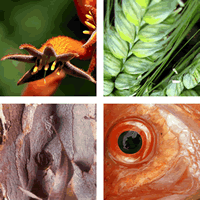Western Australian Organism List (WAOL)
Q: How do I find out if the plant or animal I wish to import is allowed into Western Australia?
A: The Western Australian Organism List on DAFWA’s website contains all this advice and more including contact details.
Q: What is the Western Australian Organism List (WAOL) and how do I use it?
A: WAOL is an online database containing the names of plants, animals, pathogens and other organisms with their declaration status. A search of the WAOL requires you to enter the species name (under the scientific name) of the organism to find an individual record. You can also search for related species or family groups if you are unsure of the correct species name.
Q: How do I find my plant or animal if I don’t know its scientific name?
A: You can search WAOL using common names but this option is fraught with dangers. Many species have more than one common name and many species share common names and, as WAOL does not list every common name for every species, you could easily select the wrong species name. The scientific name, however, is unique to each species and is the only legally recognised name for organisms under the BAM Act.
Each scientific name is made up of two parts, the genus and the species name. The genus is the name applied to the last group of related organisms before application of the species name. There are numerous sources of scientific names available today and the best are on the internet.
Note that synonymy is rampant in taxonomy. Synonymy occurs when a species has more than one scientific name. The current, or accepted name, will be listed on WAOL and any commonly used synonyms listed against the accepted name. If you use a synonym when looking for an organism on WAOL, and the name is allocated to its accepted name, WAOL will return the record for the accepted name with details of any synonyms listed.
If the name you are using is not listed on WAOL you are unlikely to find any relevant records from your search efforts. Contact a Quarantine WA officer for advice if this occurs, as your species may not be listed and therefore requires assessment.
Q: WAOL says the species I want to import is a Prohibited Organism (s12) but says ‘Permit Required’. What does this mean?
A: Prohibited organisms can be imported and kept under a permit but the conditions applied to some species may only be appropriate or available to research organisations or institutions with high levels of biosecurity. Quarantine WA staff can provide you with further contact information if you wish to pursue your enquiry.
Q: WAOL says the species I want to import is a Permitted Organism (s11). What does this mean?
A: Permitted organisms can generally be imported without a permit; however, there may be other quarantine conditions to be met which would require a Quarantine WA approval permit. This may involve either pre-transit or post-transit treatments, post-entry quarantine measures or possibly total prohibitions on certain life stages (for example, live plants in the family Myrtaceae which are hosts of the pathogen myrtle rust). It will always pay to consult a Quarantine WA officer to check on what entry conditions exist for the species you wish to import.
Q: WAOL says the species I want to import is a Permitted Organism (r73). What does this mean?
A: Regulation 73 permitted organisms require a permit to be imported. This is normally due to issues surrounding identification of the species or other special import requirements. Consult a Quarantine WA officer before importing any species listed under r73.
Q: WAOL says the species I want to import is a Declared Pest (s22). What does this mean?
A: Declared pests can be imported and kept under a permit but the conditions applied will depend on the status of the species, the areas it is declared in and the risk it poses within the State. Consult a Quarantine WA officer to check on what entry conditions or movement restrictions may exist for the species you wish to import.
Q: If an organism is listed as permitted in WAOL and no permit is required, does this mean that I can bring it into Western Australia without any restrictions?
A: No. Please check the e-manual for entry requirements for the organism. This is accessed through the WAOL.
Q: The species I’m interested in is not listed on WAOL, can I have it assessed?
A: Yes. Contact Quarantine WA and request for the species to be assessed for inclusion on WAOL. Consultation among other Government agencies is a requirement under the BAM Act where the species being assessed may be of interest to them, but the timeframe for assessments will generally be in the order of three to six weeks or as much as 26 weeks for species that require wider and more extensive consultation.
Q: How many species are there on WAOL?
A: As of 20 March 2013 there are 55 585 Permitted Organisms, 9501 Prohibited Organisms and 249 Declared Pests on WAOL, a total of 65 335 organisms. Organisms are routinely assessed for addition to WAOL.
Q: Is there a process for the maintenance of WAOL over time?
A: Yes. A process has been developed with the team that administers WAOL to ensure that only Subject Matter Experts (SMEs) are able to change records within the list and that any changes recommended by the SMEs are approved by the relevant authority.

